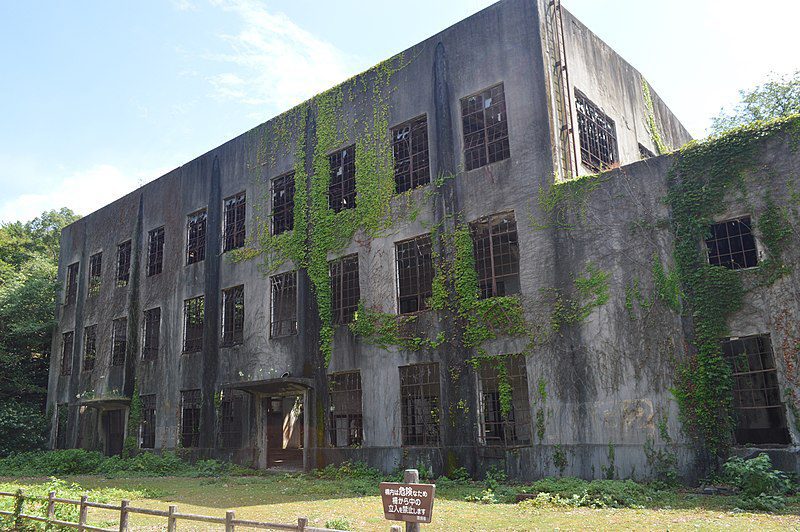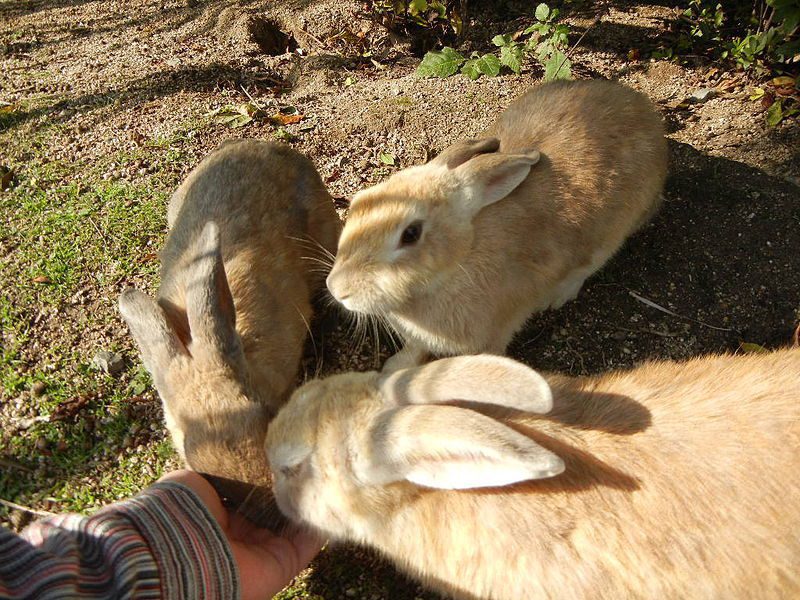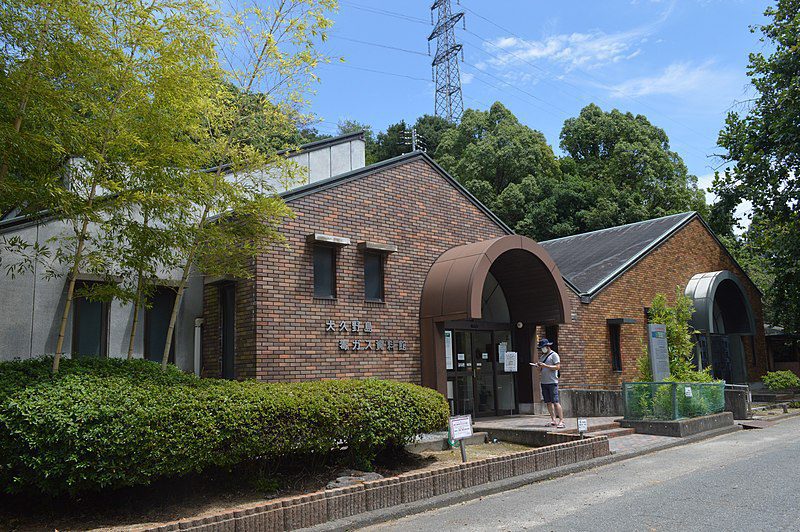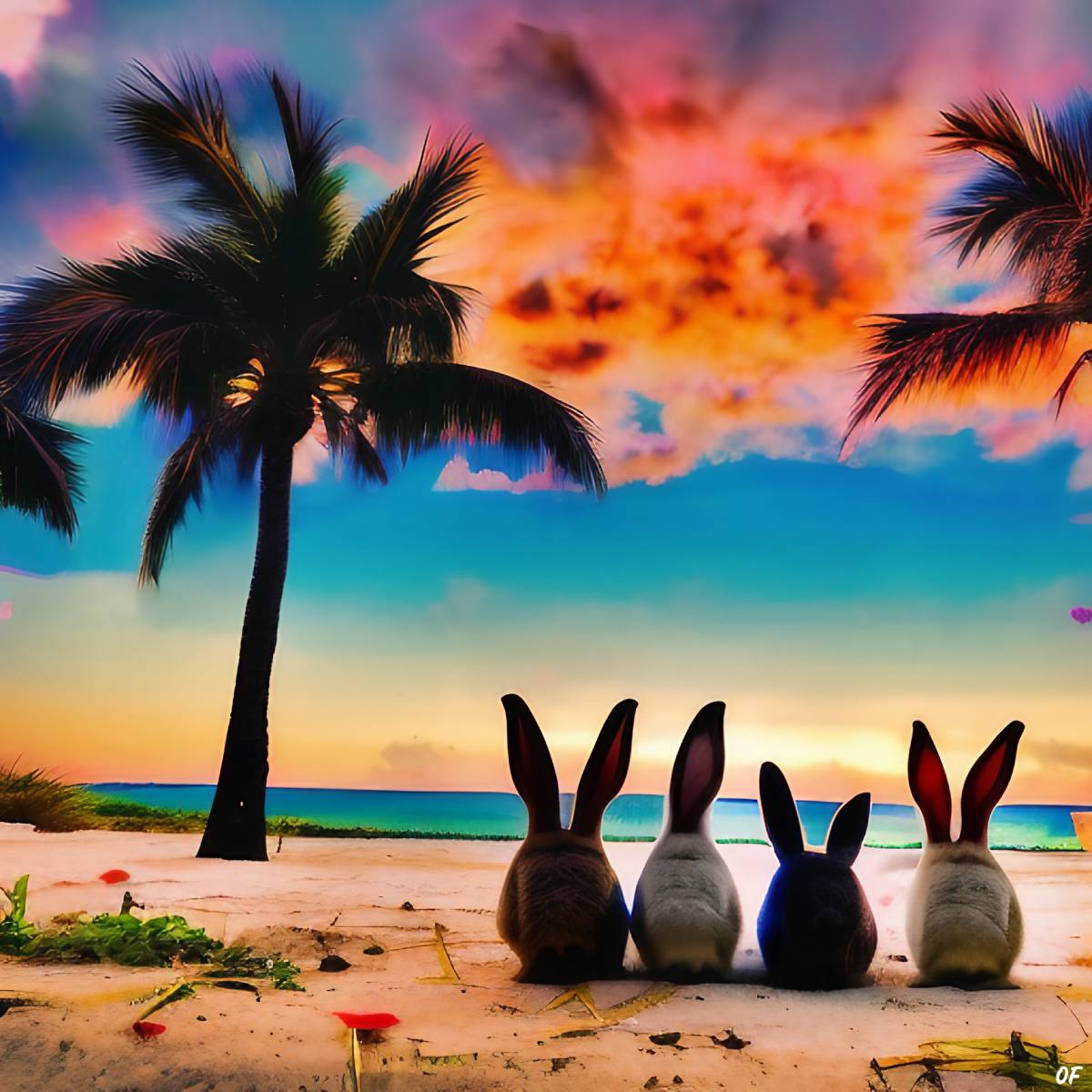Luscious forests, natural hot springs, white sand beaches, and stunning views over the Seto Inland Sea: Ōkunoshima truly is a bucket list definition. Oh, and it’s home to hundreds of semi-wild rabbits.
You might have already heard of Japan’s Rabbit Island. Videos of tourists feeding fluffy bunnies out of their hands, or even being swarmed by the cute lil’ critters, have put the small island on the map as a dream travel destination. You might think it’s paradise on Earth, the epitome of Kawaii, but what might look cute and cuddly from the outside actually harbors a dark history and an uncertain future.
Our story starts in World War II…
Before the 20th century, Ōkunoshima island was virtually uninhabited. At the turn of the century, it counted only 26 residents, who worked on small family farms or manned the lighthouse. All of this would change in 1925 when the Japanese Imperial Army Institute of Science and Technology opened a research facility on the island dedicated to the improvement and manufacture of chemical weapons. Since chemical warfare had been outlawed that same year by the Geneva Protocol (of which Japan was a signatory), this initiative had to be top secret. Ōkunoshima was chosen for the project due to its seclusion, and the small island was whipped from the face of most maps.

During World War II, operations on the island intensified. Not only did the research project continue, but a full-scale poison gas factory was opened. This is where the first rabbits enter the story of what would come to be known as ‘Rabbit Island.’ Around 200 test rabbits were brought to Ōkunoshima, and were subjected to cruel experiments researching the effects of mustard gas, phosgene, and other chemical weapons. So is today’s Rabbit Island population descended from those poor unfortunate test bunnies? Well, probably not. Instead of being granted a pleasant retirement on the lush green island, all of the rabbits found at the facility were euthanized by occupying American soldiers.
The rebirth of Rabbit Island
With the end of WWII and the closure of the gas factory, Ōkunoshima once again became an obscure, uninhabited island, though this would not last long. The economic boom and the improvement of working conditions in the mid-1950s gave Japanese citizens enough free time to take part in domestic tourism and outdoor activities. The National Parks Act allotted money for the regeneration of the island into a tourist destination. A national park resort hotel and campsite opened to tourists in the early 60s, and within the decade, the island had become a full beach resort, including a visitor center, coffee shop, and gift shop. A ferry terminal on the island welcomed boatloads of tourists from the mainland every day, all coming to visit the beautiful beaches, idyllic forests, and natural hot springs.
With hunting dogs and cats banned from the island, the stage was perfectly set for Ōkunoshima to welcome its first free rabbit population. We know that bunnies started to appear in great numbers in the 1970s, but exactly where they came from is still unknown. While some suggest that a few rabbits escaped extermination at the end of WWII, a more accepted theory is that today’s bunnies descend from eight European rabbits that schoolchildren released in 1971. There’s also some evidence that two British tourists lost their pet rabbits on the island in the early 70s, so those too may have contributed to the Rabbit Renaissance.
The bunny boom
Time wore on, and the steady stream of elderly onsen visitors and local beach lovers continued to come and go from Ōkunoshima. By the early 2000s, around 125 thousand people visited the island each year, and the rabbit population had leveled out at around 300 individuals. That’s until a viral video of a woman being swarmed by hoards of bunnies went viral in 2014, rocketing Rabbit Island to world fame.

This is when everything changed. The island experienced a tourism boom; by 2017, the annual tourist figure was over three times the size of pre-video figures. Visitors from Japan and abroad flocked to the island with bags full of rabbit food, enticing the furry locals to eat out of their hands. Rabbit populations likewise soared. In 2018, it was estimated that their numbers topped 1000. Each member of this massive population relied on tourists to feed them since the island couldn’t sustain so many animals. Flocks could be found lounging around the hotel and the beach, waiting for food in exchange for that perfect Instagram-able shot.
All is not well on Rabbit Island
As the bunny population ballooned, Ōkunoshima became less and less able to sustain its inhabitants. Without enough seeds, leaves, grass, and roots (the natural diet of a European rabbit) to go around, individual bunnies became reliant on the food tourists brought. While cartoons might have taught us that a rabbit would like nothing more than to live on a diet of carrots, cabbage, and lettuce, human food does not provide nearly enough of the vital minerals that the animals need for a balanced diet. The presence of leftovers, rotting scraps, and trash left by human visitors also led to the spread of mold and bacteria and encouraged a growing population of rats. As such, deficiency and infectious diseases ran rampant among the rabbit population of Rabbit Island.
And that’s not all. Though all that remains of the island’s gas factory are a handful of ruined buildings (now used as the Ōkunoshima Poison Gas Museum), almost 20 years of manufacturing mustard gas and phosgene permanently poisoned the groundwater supply. The rabbits, therefore, rely on tourists not just for food, but bottled water too. The Rabbit Island website reminds visitors to check the animals’ water bowls, especially near the hotel, because the rabbits cannot survive without fresh water.

Notwithstanding illness brought by toxic water and a bad diet, increasing tourism on the island led to increased instances of bunnies being injured by cars, bikes, joggers, and golf buggies. At the end of the 2010s, all was not well on the Island of Rabbits, despite what cute videos and colorful marketing might have you believe. While the animal population was thriving as a whole, individuals’ lives were often nasty, brutish, and short.
A fresh start?
Though the bunnies of 2019 suffered, they had no idea of the upheaval that a little human virus would deal to their community just around the corner. That’s right, along came Covid-19, and the tourism that the feral rabbits relied on ground to a halt. With no more visitors, the rabbits of Rabbit Island had lost their largest food source, meaning that they would, once again, have to rely on the meager natural offerings of the land for survival.
And survive they did… to an extent. In January 2021, a survey by the Ministry of the Environment found that the rabbit population of Ōkunoshima had almost halved from its pre-pandemic number, now counting between 500 and 600 individuals. This doesn’t necessarily mean that they all starved to death. During periods of shortage, wild animals are often less inclined to breed, meaning that their numbers naturally decrease.
But with tourists now returning to the island, the natural question to ask is ‘what next?’ Can we stop the disastrous effects of the over-tourism that we saw back in the 2010s, or are the rabbits of Rabbit Island doomed to live out the same cycle so long as we allow humans into their habitat? The Ministry of the Environment is using the population reset as a way to start afresh on Ōkunoshima. They’re experimenting with rolling out initiatives to educate visitors on the animals’ natural lifestyles and have floated the idea of intervening to control the population should it get out of hand again.
Only time will tell if Rabbit Island will once again become the bunny paradise that it was 20 years ago, but right now, the future seems bright.


